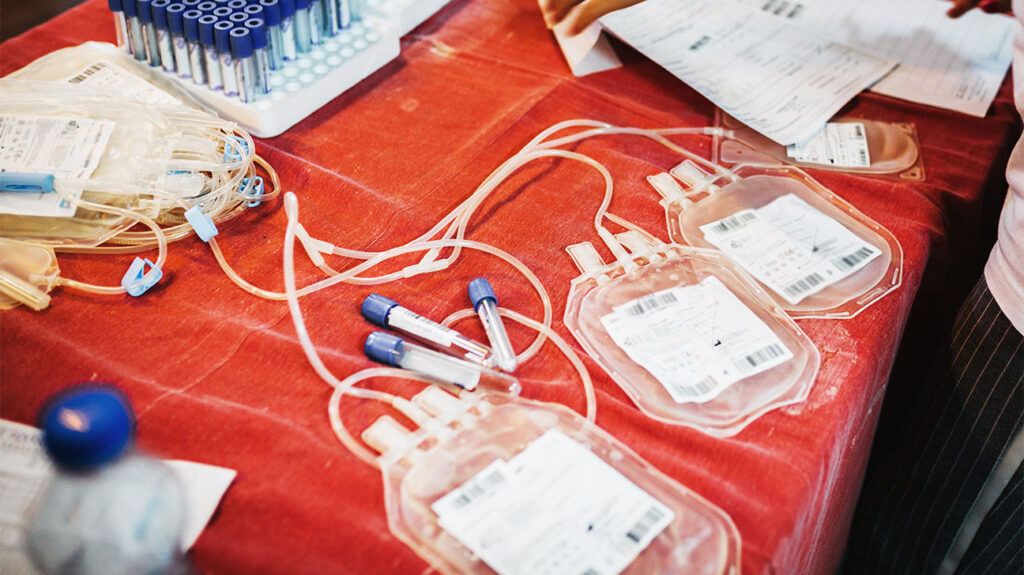Phlebotomy refers to drawing blood from a person’s vein with a needle. Lab tests on blood samples are important as they measure different blood components and provide information that can lead to a diagnosis.
In cases where an individual has too many red blood cells or too much iron, phlebotomy may also serve as a medical treatment.
In previous centuries, phlebotomy was called bloodletting, and people regarded it as a method of correcting body fluid imbalances. While this often had unfavorable outcomes in the past, risks linked to phlebotomy procedures are minimal today.
Keep reading to learn more about phlebotomy, including its history and risks, as well as what to expect and how to prepare for the procedure.

Phlebotomy is the act of removing blood from a person’s vein by using a specific type of needle. A phlebotomist may draw blood to help with a medical diagnosis or treatment.
Diagnostic techniques involve removing blood samples so that laboratory machines can measure various components.
Laboratory analyses
Another diagnostic technique involves examining a blood smear under a microscope to provide essential information. For instance, a blood smear can help diagnose sickle cell anemia, a condition where red blood cells have the form of a C-shaped farm tool.
Learn more about different types of blood tests.
The use of phlebotomy for treatment is a practice called therapeutic phlebotomy. Doctors use this for conditions where removing excess red blood cells or iron may result in a better outcome.
Such conditions may include:
- polycythemia vera, a cancer that causes increased production of red blood cells
- porphyria, a condition involving the buildup of a substance necessary for making heme, a part of hemoglobin
- hemochromatosis, a condition that causes an increased accumulation of iron
What is a phlebotomist, and what do they do?
A phlebotomist is a healthcare professional who collects blood samples for the following:
- blood tests
- research
- blood transfusions
- blood donations
Phlebotomy was once called bloodletting. Its origins trace back nearly 3,000 years to ancient Egypt. From there, it spread to other parts of the world. However, unlike present-day treatment, many people did not understand the procedure, and there was poor regulatory control.
In previous centuries, many people thought any health condition stemmed from an imbalance in body fluids. Consequently, they viewed bloodletting as a means of correction.
As a result, the practice
Blood tests form part of several medical treatment programs, and people should follow their doctor’s instructions regarding preparation.
Preparation
For certain lab tests, preparing to have blood drawn may include the following:
- fasting overnight or for a certain time period
- avoiding certain foods and beverages, such as cooked meat, herbal teas, and alcohol
- stopping certain medications or dietary supplements for a specific time frame on the day of the lab tests
- avoiding strenuous exercise or sexual activity
- abstaining from smoking, if applicable
- drinking extra water before some blood or urine tests
If someone has a fear of needles, they should let the phlebotomist know beforehand. Distractions, such as watching a video on a phone or bringing a friend to talk with, may also help.
During the test
The phlebotomist will guide the person through the following steps:
- The person will sit or lie down.
- The phlebotomist will ask them to make a fist and tie a tight band called a tourniquet around their upper arm.
- The phlebotomist then inserts a needle into a vein, and the blood will flow into one or more attached test tubes.
- If the phlebotomy is for treatment, the time will depend on the amount of blood it is necessary to remove.
- After the blood removal, the phlebotomist removes the tourniquet and needle and places a dressing over the area.
- The phlebotomist may ask the individual to apply pressure on the dressing to help stop the bleeding.
Complications are
Risks may include:
- pain
- dizziness
- lightheadedness
- bruises
- hematoma, an atypical pooling of blood under the skin
- nerve injury
These risks tend to occur due to improper technique. A
Phlebotomy is a procedure where a phlebotomist or qualified healthcare professional draws blood from a person’s vein with a needle. It is a critically important diagnostic tool as lab tests on blood samples can measure levels of different components.
Phlebotomy also has therapeutic purposes for conditions involving high red blood cells or iron levels.
For centuries, people used phlebotomy for bloodletting, which they believed corrected body fluid imbalances. Although this was dangerous in the past, the 21st-century use of phlebotomy has almost no risks if a phlebotomist uses the correct equipment and technique.
Healthcare professionals will advise people on the necessary preparations they should take before they have blood drawn.
